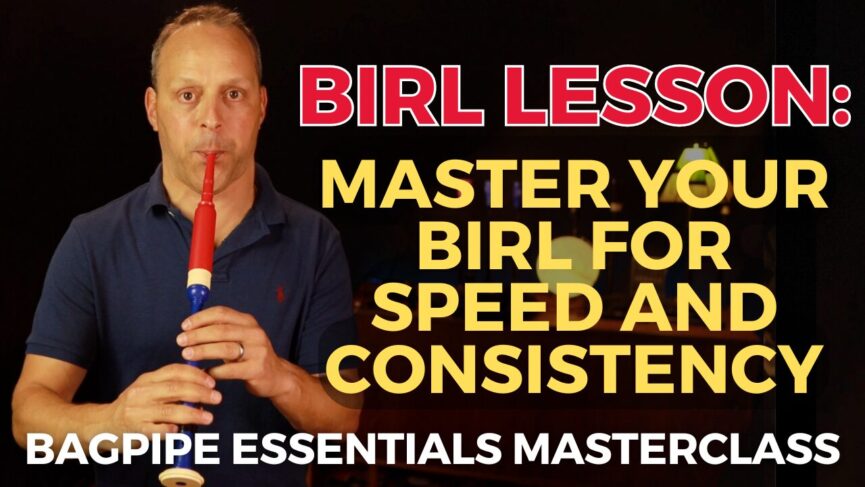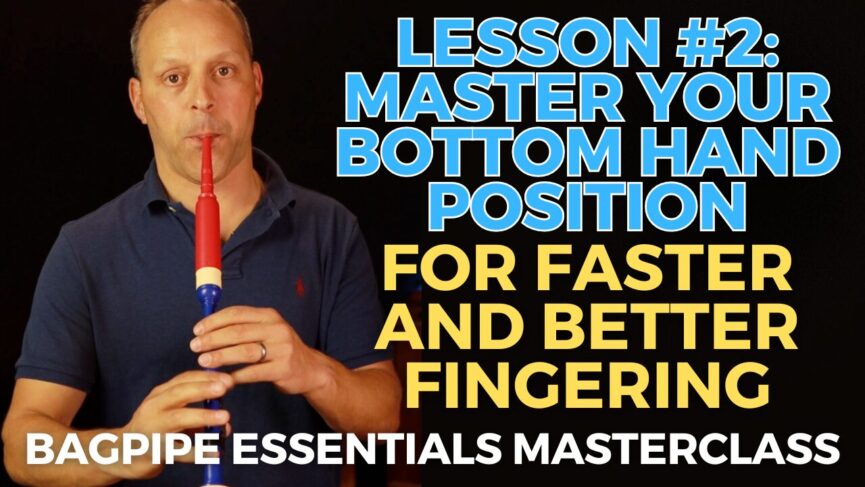
AS FEATURED IN

How to Easily Thread Your Drone Reed Seats for a Secure Fit and Better, More Stable Bagpipe Sound
by Jori Chisholm, Founder of BagpipeLessons.com
Last Updated: April 11, 2025
Threading your bagpipe drone reed seats is one of the simplest and most powerful modifications you can do to improve the performance and experience of your pipes. With the right tools, you can thread your reed seats so your drone reeds will stay firmly and securely inserted into your pipes. Say goodbye to worries, drone reeds falling out, and loose, wobbly reeds. This is a one-time modification—thread your reed seats once and enjoy securely fitting, stable drone tone for life.
I’ll take you through a detailed, step-by-step process to thread your drone reed seats using a tap tool. You’ll learn how to achieve a secure fit that ensures your reeds never fall out, helping you maintain consistent tuning and an excellent sound quality every time you play.
I explain which tap sizes work best for tenor and bass drones and share important tips to avoid damaging your pipes during the process. This upgrade is a game-changer for pipers, providing enhanced stability and reliability so you can focus on your music without constant adjustments.
Whether you’re a beginner or an experienced player, this technique will transform your setup and boost your confidence every time you perform. This is one of the best upgrades you can make to your pipes. It eliminates the worry of drone reeds slipping or falling out, and helps maintain better tuning stability for solo performances, pipe band playing, or competition settings.
I have an old a trusted set of metric taps from Craftsman, but this is closest what I use:
- Metric Tap M10 x 1.25mm – fits most tenor drone reed seats
- Metric Tap M11 x 1.5mm – fits most bass drone reed seats
- Adjustable Tap Wrench Handle for taps sized M1-M12
Upgrade Your Bagpipe Setup – Get the Right Tools
- R.G. Hardie & Co. Drone Brushes
- EzeeDrone Reeds (Combo Set) – My favorite set for tone and stability
- Precision Tuning Tool Kit – The must-have kit for perfect tuning
- Tone Protector Chanter Cap & Tone Protector Reed Case – Keep your reed at the perfect humidity
What You’ll Learn
- Why threading your drone reed seats is a game-changer for pipers
- The best tap sizes to use for tenor and bass drones
- How to safely cut threads without damaging your pipes
- Why this technique works with all major brands of drone reeds
- How this modification improves tuning consistency and reed security
Video Transcript: Hey everybody, Jori Chisholm here from BagpipeLessons.com. I have been setting up a new set of pipes for a student. Last week on the YouTube channel, I showed you some of these really cool new R.G. Hardie nickel and Blackwood bagpipes. Today, I’m going to show you a really cool modification that you can do on your pipes at home with a couple of simple tools. This is really going to enhance your bagpipe setup.
What I’m talking about is threading your drone reed seats.
What Is Threading?
Threading involves cutting a screw thread into the reed seat, which is where the drone reed sits inside the drone. This ensures that the reeds never fall out again.
Let me explain how this works. You’re probably familiar with a metal bolt and nut—how the nut threads onto the bolt. That’s the same concept we’re going to apply here. We’ll use a small tool called a tap to cut screw threads into the drone reed seat. Once threaded, the drone reed can be screwed into place rather than being shoved in with hemp and hoping it stays secure.
With this method, your drone reeds will never fall out. All you’ll need to do is give them a little twist before playing—every time before I play, I do this, and definitely before a performance or band practice. This keeps them nice and snug.
Tools You’ll Need
You’re going to need some taps. A tap is a tool used to cut threads into material. Unlike a metal bolt, which has solid threads all the way around, a tap has little grooves cut into it, which allow it to cut threads into the wood as you turn it. This means we are permanently altering the pipes, but don’t worry—I’m going to show you exactly how to do it so it’s perfect. You’ll be really glad you did this.
Currently, I don’t know of any bagpipe manufacturers that do this as a factory standard. Some newer pipe chanters have a threaded reed seat, which allows the reed to be adjusted for tuning. However, in this case, we’re not using the threaded drone reed seats for tuning. We’re simply using them to create a firm, secure grip between the drone reed and the drone itself.
Choosing the Right Tap Size
I’ll put links in the description below, but taps come in different sizes. For most sets I’ve worked on:
- Tenor drones: 10mm x 1.25
Bass drone: 11mm x 1.5 - Some sets may require different sizes, so double-check before proceeding.
I also use a small piece of black electrical tape on the tap. This marks how deep I want to cut the threads. I want enough threads for a secure grip, but I don’t want to go too deep and expose threads inside the drone, which could impact sound quality.
The Threading Process
I’ll demonstrate using one of my tenor drones. Right now, the inside of the reed seat is a simple smooth cone shape.
- Choose the correct tap – For my tenor drone, I confirm the tap fits by inserting it. If it goes in about a third of the way, that’s perfect.
- Attach the tap to the wrench – Secure it firmly.
- Align the tap straight – Make sure it’s not angled.
- Cut the threads – Turn the tap into the wood. As it starts to get tight (because the reed seat tapers), back it out a few turns, then turn it back in.
- Repeat this back-and-forth motion as the tool cuts the threads.
- Continue until reaching the tape marker.
- Stop at the marked depth to avoid over-threading.
- Remove the tap – Unscrew it completely.
- Clean the reed seat – Use a small brush to remove wood shavings.
Now, the inside of the reed seat has threading, just like the inside of a nut.
Installing the Drone Reed
Ezeedrone reeds have a rubber gasket on them, but I like to add a bit of hemp as well.
- Wrap a few turns of hemp around the reed.
- Hold the drone reed securely (avoid the tongue and bridle, as they are fragile).
- Twist the drone reed into the threaded seat.
- Now, the reed is super snug—you can’t pull it out. This method works because the rubber gasket and hemp are soft and naturally mold to the threads in the drone, securing the reed in place.
Threading the Bass Drone
For the bass drone, the process is exactly the same. Just make sure to use the correct tap size—11mm x 1.5 for most pipes.
Narrow Reed Seats? Use a Tapered Reamer
If your drone has a very narrow reed seat, like on some older or lower-quality bagpipes (e.g., some made in Pakistan), you may need to widen the opening first.
- For this, you’ll use a tapered reamer. A tapered reamer (such as the Craftsman Model 5479) has cutting surfaces that gradually widen the bore.
- Insert the reamer and rotate it to remove material until the opening is wide enough to fit the tap.
- Once the seat is widened, proceed with the threading process as described earlier.
Important Tips
- Use the correct tap size – I’ve mentioned the sizes I use, but double-check for your pipes.
- Keep the tap straight – African Blackwood is strong, but if you insert the tap at an angle, you could damage the reed seat.
- Don’t overtighten – If you force the tap too deep, you can split the wood.
- Use a back-and-forth motion and stop if it starts feeling too tight.
- Use tape to mark depth – This ensures you don’t cut threads too deep.
Final Thoughts
This simple modification will keep your drone reeds securely in place, preventing them from falling out and helping stabilize your bagpipe sound. I personally feel it also helps maintain tuning because the connection between the drone reed and the drone is much more solid.
Check out the description below for links to the tools you need, including the tapered reamer and metric tap set. I also have Ezeedrone reeds and other accessories available in my shop.
Thanks for watching! Don’t forget to subscribe to the channel and visit BagpipeLessons.com for more resources.
See you next time—Mahalo!





